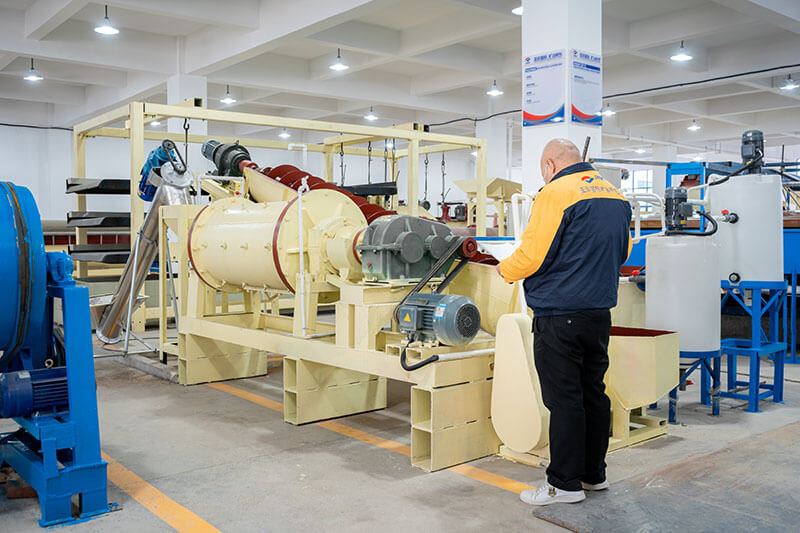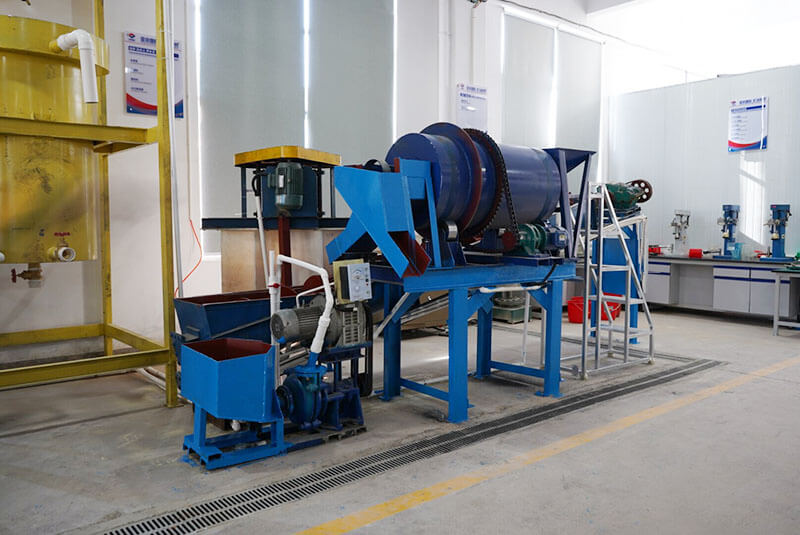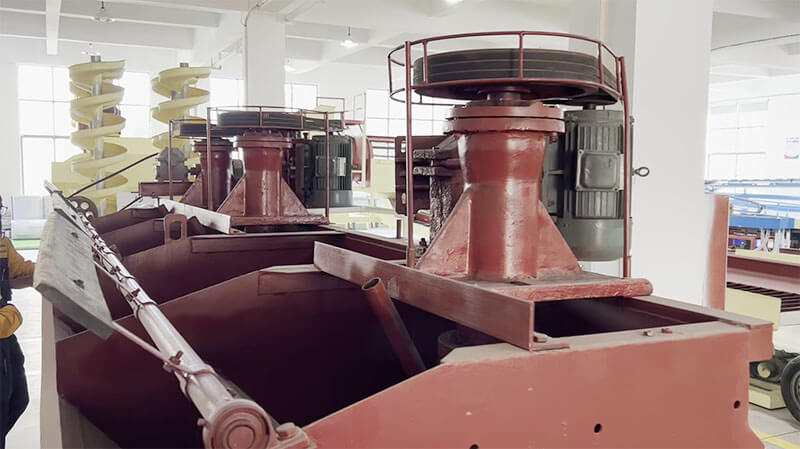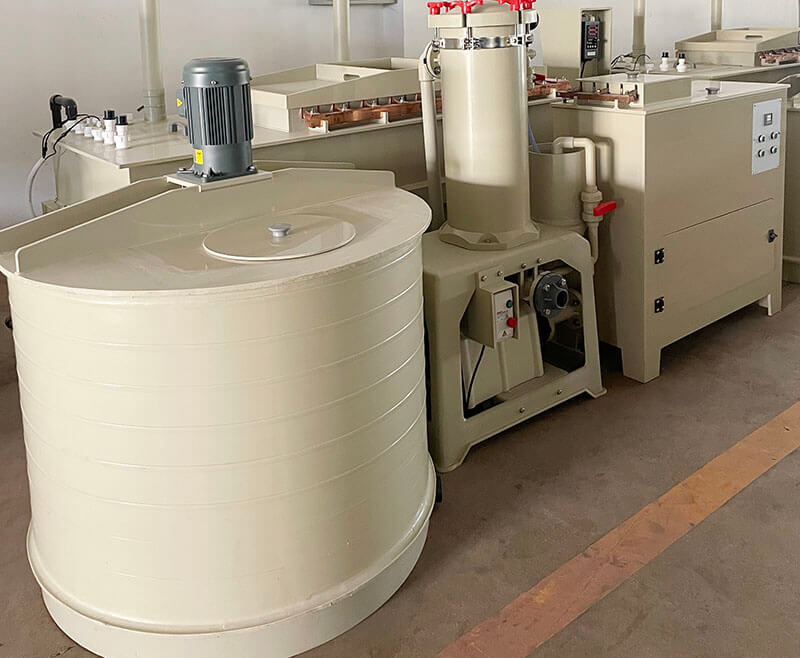Lepidolite ore is the most common lithium-extracting material and an essential mineral for extracting lithium. It is an aluminum silicate of potassium and lithium, belonging to a category of mica minerals. Lithium mica exists in granite pegmatite, with purple-pink colors, and is colorless. A lithium ore processing plant is usually composed of a series of supporting equipment such as jaw crusher, impact crusher/cone crusher, circular vibrating screen, ball mill, spiral classifier, mixing bucket, flotation machine, thickener, filter, filter press, dryer, etc. Take lithium ore as the raw material, through processes such as crushing, pre-grinding, rough grinding, iron removal, gravity separation, flotation, pressure filtration, and finished product storage to form a high-efficiency beneficiation and comprehensive utilization project production line for annual lithium ore production. However, we need to analyze the situation based on the facts and add or reduce the equipment according to the customer’s reasonable requests, to meet the conditions of high efficiency, low energy, high processing capacity, and economic rationality of the production line as much as possible. With the rise of new energy electric vehicles, the demand for lithium batteries is increasing, and more and more people are joining the selection of lithium mines. Before establishing the beneficiation line, we will conduct some experiments on ore samples to determine the optimal beneficiation plan. So how many stages for processing the lepidolite ore? What are the equipment for lepidolite testing experiment?
Lepidolite Ore Process Stages
The production process of the lepidolite ore flotation plant includes stages such as crushing and screening, grinding and grading, flotation and drying, and the specific process steps are as follows:
(1) The lepidolite ore first goes through a jaw crusher for crushing, then goes to an impact crusher/cone crusher or hammer crusher for further crushing. The material from the second crusher goes to the vibrating screen and screens out several final products.
(2) The qualified lithium ore material from the vibrating screen goes to the ball mill for wet grinding processing and is then screened by a spiral classifier. The unqualified slurry goes into the ball mill for re-grinding.
(3) After classification, the materials that meet the conditions will enter the mixing tank and thoroughly mix with water for stirring. Then, they will enter the flotation machine and add appropriate reagents. After it reacts with reagents with bubbles to get lithium concentrate. After that, it will be dehydrated by a thickener and dried by a dryer.
Lepidolite Ore Testing Equipment
Equipment includes lab jaw crusher, lab hammer crusher, lab ball mill, lab vibrating screen, and lab flotation machine.
1. Laboratory Jaw Crusher-Lepidolite Ore Testing Equipment
The function of a lab jaw crusher is to crush large blocks of material into small particles. The lab jaw crusher has wide applications in the industries like mining, building materials, chemical engineering, metallurgy, etc.
Operation: Pour the lepidolite ore into the laboratory jaw crusher for crushing it into small particles through the two jaw plates crushing and squeezing, and the crushed material gathers at the discharge port.
Product Features
- Accurate adjustment: The laboratory jaw crusher output is adjustable. We can adjust the gap between the jaw plates through an adjustment device to control the degree of material crushing. It allows laboratory researchers to accurately adjust the output material size according to experimental needs and obtain the required sample size.
- Reliability and Durability: The product adopts a sturdy frame and high-quality jaw plate material, which has high wear resistance and compressive strength and works stably for a long time. It makes them suitable for different materials and provides reliable experimental results.
- Simple operation: This machine has a simple structure and is easy to operate. Adjust the device and start the motor to complete the crushing process. It allows laboratory staff to get started and improve work efficiency.
- Wide Application: Laboratory jaw crusher has a wide application in laboratory research and sample preparation in fields like geology, metallurgy, chemical engineering, and building materials. For example, geologists use this equipment to crush rock samples for ore analysis and mineral resource assessment.
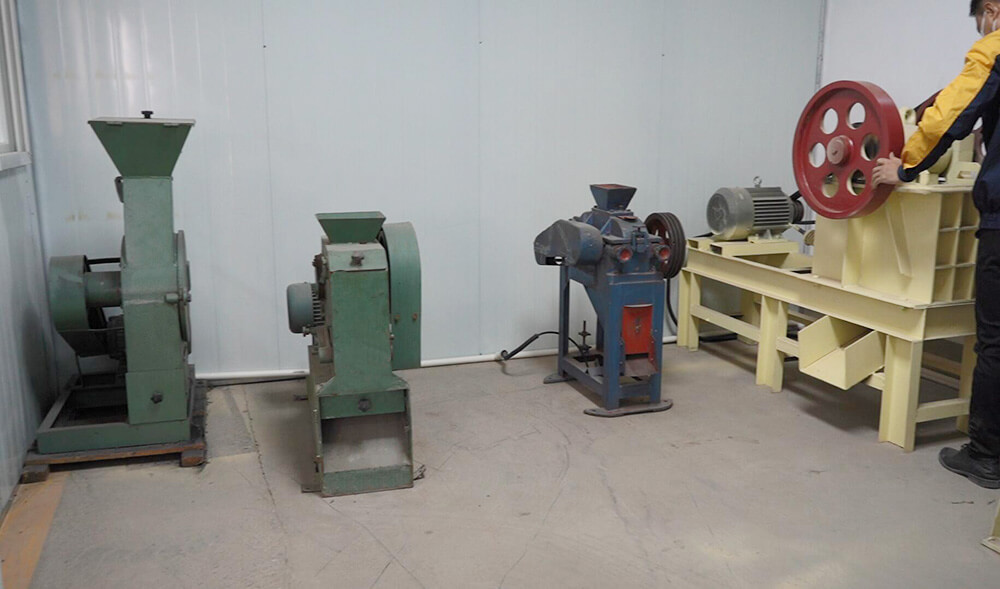
2. Laboratory hammer crusher-Lepidolite Ore Testing Equipment
The function of a laboratory hammer crusher is to crush small particle materials into fine sand. Hammer crushers are suitable for crushing medium hardness materials such as limestone, slag, coke, and coal, and industrial sectors such as cement, chemical, power, metallurgy, etc.
Operation: Pour the material into the inlet and crush it into small particles through the hammer inside. The minimum discharge reaches 0-1mm.
Performance characteristics
- The bearing boxes of the hammer crusher are all made of cast steel, and each axle box fixes with four screws. By changing the safety hazard of bearing box wear caused by loose screws in the previous generation of hammer crushers to make the same equipment more scientific and applicable.
- Its crushing ratio is large, usually from 10 to 25, with the highest reaching 50. It has advantages like high production capacity, uniform products, few excessive phenomena, low energy consumption per unit product, simple structure, light equipment quality, easy operation and maintenance, etc. From energy consumption and efficiency, the equipment has high crushing and grinding efficiency and low power consumption, it improves the production capacity and reduces material production costs.
- The hammer crusher uses two sets of rotors connected in series to transport materials through a conveyor to the inlet of the hammer crusher. The material crushed by the superior rotor inside the hammer crusher chamber immediately enters. The hammer head of the rapidly rotating lower rotor finely crushes again, and the materials in the crushing chamber of the hammer crusher collide rapidly, hitting each other, forming the effect of hammer powder and material crushing. Then, they are directly discharged from the discharge port, forming material particles with a discharge particle size of less than 3mm.
3. Laboratory ball mill-Lepidolite Ore Testing Equipment
The function of a laboratory ball mill is to grind small particle materials into powder form. Ball mills are suitable for grinding rock gold, lithium, copper, chromium, tin, tantalum, diamonds, silica sand, etc.
Operation: Pour the material into the inlet of the ball mill, grind it at a specific time, and pour out the output. The minimum discharge of the ball mill reaches 0.074, which is 200 mesh.
Characteristics
- Both feeding and discharging sizes are large, lightweight, and easy to operate.
- Large one-time processing capacity. It is suitable for dry and wet grinding processes.
- Free grinding time.
- The machine structure is compact, and the transmission mechanism design is reasonable, simple, and reliable.
4. Laboratory vibrating screen-Lepidolite Ore Testing Equipment
Its function is to replace the spiral classifier, which will screen out the appropriate particle size for the following process and perform preliminary desliming.
Operation: Set the screen mesh size of this vibrating screen to 40 mesh. Pour the material from the ball mill into the vibrating screen and screen out 0-40 mesh material.
Characteristics
- Small mesh size for separating small particles; High efficient screening capability, laboratory vibrating screen will separate materials quickly with standard particle sizes.
- Screen specifications that meet the requirements of national standards; Accurate test results, and laboratory vibrating screen will provide accurate particle distribution data.
- The laboratory vibrating screen machine is suitable for analyzing various particle shapes and sizes. Easy to operate, the laboratory vibrating screen machine has the characteristics of convenience, high speed, and accuracy.
5. Laboratory flotation machine-Lepidolite Ore Testing Equipment
The function of a laboratory flotation machine is to add different reagents to separate minerals.
The flotation machine is suitable for processing gold, lithium, copper, zinc, lead ore, etc.
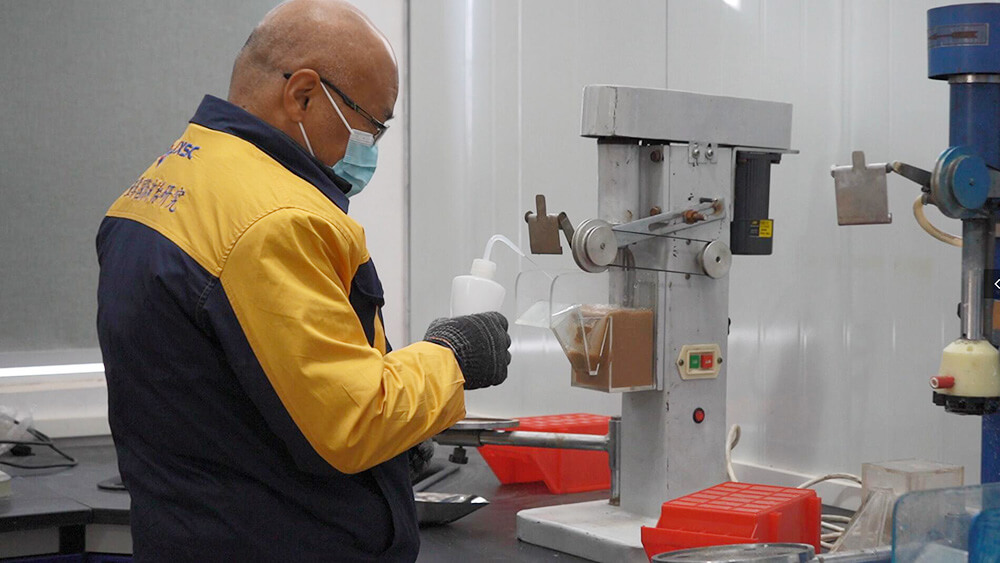
Operation: Pour the slurry into the tank and dilute it with water to the required concentration. Start the motor and add an appropriate flotation agent according to the experimental requirement. When foam generate in the tank, turn on the switch of the scraper part to start working. After reaching the specified flotation time, turn off the motor, stop the impeller and scraper, and finally obtain the concentrate after the flotation treatment.
Advantages
- This type of flotation machine has a reasonable structure, stable and reliable operation, and its performance has reached the advanced level of foreign flotation machines. It is suitable for separating non-ferrous, ferrous, and non-metallic minerals.
- This equipment has the following characteristics: self-aspirating air, good slurry circulation characteristics, relatively stable suction capacity, moderate stirring intensity, good solid particle suspension, stable liquid level, and low power consumption.
- Fine workmanship, neat appearance, and even spray painting.
JXSC lab mineral processing equipment manufacturer provides various laboratory beneficiation equipment for minerals testing such as gold, tin, tungsten, lead, zinc, tantalum, niobium, iron, manganese, silver, titanium iron, and coal, as well as laboratory jaw crusher, hammer crusher, roller crusher, grinding equipment, mineral separating equipment, screening, and washing equipment, etc. Welcome to consult if you are interested in our lab machines.

